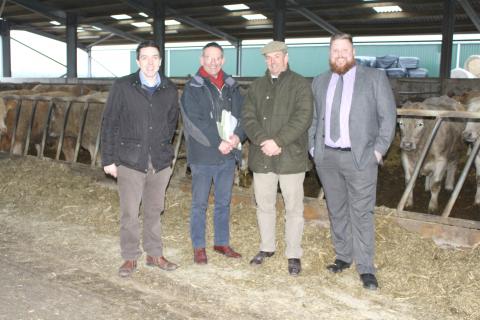AS THE trend towards lighter beef carcases looks set to continue, farmers will have to adapt in order to produce the cattle needed to meet target specification. Formulating appropriate rations for cattle at different growth stages is one of the best ways to work towards achieving market requirements and can also have a direct impact on the cost effectiveness and profitability of an enterprise.
Currently, only 54% of cattle meet target carcase conformation and fat class specification and one major processor, based in Merthyr Tydfil, recently capped payments for cattle at 400kg. St Merryn Foods, part of the 2 Sisters Food Group, has introduced a cap on carcases weighing between 400kg-420kg, with a 5p/kg deduction on weights between 420kg-430kg and 10p/kg taken off carcases weighing more than 430kg.
“We have chosen to cut the weight specification on cattle because heavier animals are not providing us with the primal cuts we need to provide the consumer with the meal solutions that they need,” Leighton Jones, of St Merryn’s Livestock Procurement Team told farmers at a Farming Connect meeting at Penmark Place, Rhoose, Barry.
“Consumers are very price sensitive and in order to compete on price with cheaper proteins we have to reduce the weight of the packet. They also have less spare time to cook meals, so packet and joint weights are reducing. Habits are changing too, with people eating fewer large roasts on a Sunday and more mini-roasts consumed mid-week. People are also more aware of health guidelines on meat consumption, which retailers have to manage in terms of serving size. All these factors lead to a need for lighter carcases.”
Nutrition is key in order to produce appropriate conformation and fat cover on lighter carcases at Penmark Place where Julian Radcliffe buys in Charolais sired suckler bred cattle from Brecon and Sennybridge marts and finishes them on grass and maize silage plus home grown cereals and beans. David Hendy, an independent nutritionist advocated a three-stage approach, tailoring rations specifically for the rearing, growing and finishing stages.
“Feeding is critical, you’ve got to manage the rumen to get the best out of the animal. The three things that you need to get right in the ration are forage, energy and protein,” said Mr Hendy.
Rations based on forage will encourage rumination and help optimise rumen health. Maximising the use of forage can also be the most cost-effective approach and help reduce production costs. Maximising 200-day weights is the focus of the rearing stage and during the growing phase, maximising forage and protein intakes will help achieve controlled frame growth. During the finishing stage it is important to increase the amount of energy in the ration to achieve optimum fat cover.

